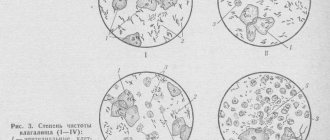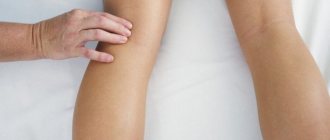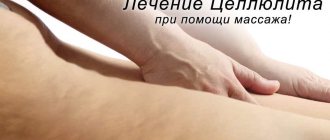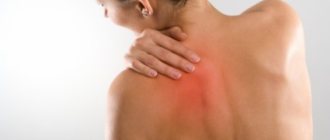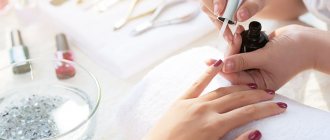Unpleasant sensations in the mammary glands are familiar to many women; they can be a sign of a variety of diseases. The most common breast disease among women is mastopathy. It can occur at any age: in very young girls and older women. According to statistics, this disease is found in approximately 40% of women of childbearing age. Having heard such a diagnosis from a doctor, probably every woman thinks about the dangers of mastopathy.
What is mastopathy?
Mastopathy is a breast disease that develops as a result of hormonal disorders of the body. It is characterized by the proliferation of connective and fibrous breast tissue, which causes the formation of multiple lumps or cysts. Breast mastopathy is a benign disease, but if not treated correctly it can develop into cancer.

Mastopathy (fibrocystic)
Mastopathy is a disease that most often affects women after 40 years of age. But despite this, caution should be shown already at the age of 25.
Symptoms
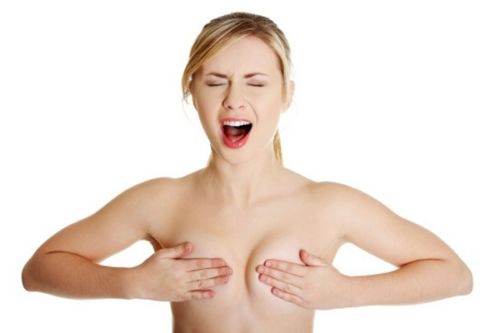
Painful feeling in the chest
There are certain signs that will help you find out whether fibrocystic type mastopathy has formed:
- The first sign is a lump in the chest. The woman herself can feel one or more nodules. You need to lie on your back, raise your right hand up, and carefully examine your right breast with your left hand. Do the same manipulation with the opposite breast.
- Breast enlargement and pain are symptoms and manifestations of a threatening disease.
- Discharge from the nipples can be of different types - whitish, transparent, brown or bloody.
- Lymph nodes increase in size. This is mainly observed in the axillary region. They are painful.
If symptoms of this nature are detected, it is recommended to inform your gynecologist. The doctor will prescribe a diagnosis.
Causes and risk factors
It is difficult to single out any one cause of mastopathy, because mastopathy depends on a combination of causes.
The main causes of mastopathy include:
- hormonal disorders in the body (long-term use of hormones, insufficient production, tumors of the pituitary gland or adrenal cortex);
- inflammatory diseases of the reproductive system;
- polycystic ovary syndrome (multiple cysts);
- uncontrolled use of combined oral contraceptives;
- type 1 diabetes mellitus;
- early onset of menstruation;
- early menopause (menopause);
- history of abortion;
- pregnancy;
- refusal of breastfeeding;
- chest injuries;
- inflammatory diseases of the mammary gland;
- thyroid diseases;
- malignant or benign tumors;
- taking certain medications;
- surgical interventions;
- chronic liver diseases;
- no pregnancy before age 35;
- chronic stress.
Risk factors for mastopathy:
- hereditary predisposition;
- overweight;
- unbalanced diet;
- climate change;
- sudden weight loss;
- age over 40 years;
- irregular sex life.
All these reasons can lead to mastopathy.
Causes of the disease
Mastopathy is a benign disease of the breast, which is characterized by pathological proliferation of breast tissue. The main reason for the development of the disease is hormonal imbalance: under the influence of any factors, the amount of estrogen in the patient’s body increases and begins to exceed the amount of progesterone, which leads to the appearance of this disease. Excess prolactin can also contribute to this.
The following factors can provoke the occurrence of the disease:
- Gynecological diseases.
- Early onset of menstruation (before 11 years of age).
- Late birth (after 30 years).
- Numerous abortions.
- Endocrine diseases.
- Overweight.
- Menopause after the age of 55 years.
- Heredity.
- Problems in your sex life.
- Constant stress.
- Bad habits.
- Short-term breastfeeding or refusal of it.
Pathogenesis
The mechanism of occurrence of mastopathy is based on the action of hormones. The condition of the mammary glands depends on progesterone, estrogen, follicle-stimulating hormone and thyroid hormones, which produce prolactin.
Under normal conditions, these hormones do not have a negative effect on the condition of the mammary gland. But if a woman is exposed to provoking factors (inflammatory diseases, injuries, abortions), hormone regulation may be disrupted. As a result, the hormonal background changes, it becomes irregular, alternating with sharp surges and declines.
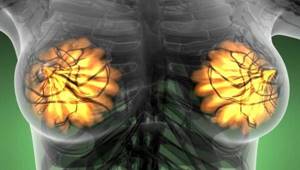
All this negatively affects the condition of the breast. The action of hormones provokes the development of cysts, fibrous changes in the mammary glands and degeneration into a malignant neoplasm).
Can mastopathy turn into cancer?
A benign lump in the mammary gland in a diffuse form does not bother a woman in any way. It is important to monitor the condition of the seal. If there is no increase in its size, then there is no need to worry. It is necessary to continue the prescribed comprehensive treatment.

Usually the doctor prescribes various drugs that improve blood circulation in the mammary glands. You can use effective folk remedies and recipes known since ancient times in treatment. Herbal medicine and traditional medicine help cope with the disease in combination with prescribed medications.
If you have mastopathy, you should not visit the sauna or perform breast massage. It is also important to avoid sunbathing. Exposure to ultraviolet rays can significantly worsen the condition of the mammary glands. Wearing a suitable bra is important. Underwear should not restrict the chest and cause discomfort.

A tan

Sauna
Mastopathy rarely turns into cancer, but it depends on the type of lump. Most often, a nodular form of a benign formation develops into a malignant tumor.
The causes of oncology are:
- heredity;
- chest injuries;
- hormonal disorders;
- stress;
- refusal of breastfeeding.

Classification
Mastopathy is classified according to types, forms and degrees.
Types of mastopathy:
- diffuse mastopathy;
- nodular mastopathy.
Diffuse mastopathy
often represents the initial stage. It is characterized by the presence of small pathological changes in the mammary gland and is easier to treat. Diffuse mastopathy, in turn, is divided into forms:
- adenosis;
- fibroadenomatosis;
- diffuse cystic mastopathy;
- fibrocystic mastopathy.
Features of forms of diffuse mastopathy:
| Form of diffuse mastopathy | Peculiarities |
| Adenosis | Characterized by the proliferation of glandular tissue of the mammary gland. It occurs in young women under 30 years of age. |
| Fibroadenomatosis | Characterized by the proliferation of connective tissue. In this case, there is a predominance of fibrosis over glandular tissue. |
| Diffuse cystic mastopathy | Characterized by the appearance of cystic cavities. |
| Fibrocystic mastopathy | The fibrocystic form is a mixed type of diffuse mastopathy. |
Nodular mastopathy
- This is a type of disease that is characterized by a more severe course. If the condition progresses, then there is a high risk of mastopathy turning into cancer.
Nodular mastopathy is divided into the following forms:
- breast fibroadenoma;
- cystic mastopathy;
- fibrocystic mastopathy.
Features of forms of nodular mastopathy:
| Form of nodular mastopathy | Peculiarities |
| Fibroadenoma | It is a dense formation of connective tissue. |
| Cystic mastopathy (nodular) | Characterized by the formation of multiple cysts in the breast tissue. |
| Fibrocystic mastopathy | The fibrocystic form is a mixed version of nodular mastopathy. |
Breast mastopathy is divided into degrees. According to Rozhkova’s classification, there are three degrees of mastopathy
:
- 1st degree – mastopathy without proliferation;
- 2nd degree – mastopathy with proliferation;
- 3rd degree – mastopathy with atypical proliferation (pre-tumor condition).
How dangerous is mastopathy of the mammary gland if it is not treated?
Mastopathy is a diffuse or nodular pathological change that occurs in the soft tissues of the mammary gland.
The disease begins to develop as a result of hormonal imbalance in a woman’s body.
When the first characteristic symptoms occur, you must consult a doctor to prevent complications and the development of more serious diseases. Let's figure out why mastopathy is dangerous.
Etiology of the disease
Mastopathy refers to dyshormonal hyperplastic processes that occur in the mammary gland. This is a fibrocystic disease in which soft tissues are affected and changed. As a result of pathological changes, they can actively reproduce.
Mastopathy develops as a result of an imbalance of connective and epithelial tissue. The disease is more common in women aged 24-48 years. In extremely rare cases, pathology is found in men. One of the main reasons is the neuro-humoral factor.
The disease may begin to develop against the background of the following factors:
- severe stress;
- neurosis;
- depression.
The disease can begin to develop against the background of severe stress
To understand the danger of mastopathy, you need to know the characteristics of the mammary glands. During the menstrual cycle, the body begins to produce hormones. These are estrogens and progesterone. The maximum concentration is observed in the first days of menstruation.
The mammary glands are influenced by hormones from the adrenal glands, pituitary gland and thyroid gland. They are carefully controlled by the cerebral cortex. As a result of the influence of hormones, regular cyclical processes occur in the breast. They manifest themselves in the form of engorgement.
There are several unfavorable factors that can disrupt the normal balance of hormones. This may be a deficiency or increased amount of hormones. They provoke active proliferation of ducts, glandular and connective tissue.
If your breasts remain tight after your period ends, you should consult a doctor. At normal levels, prolactin helps regulate internal processes in the body. His main task is to help the expectant mother. It helps increase the synthesis of components such as breast milk lipids, carbohydrates and proteins.
When a woman finishes lactation, prolactin levels decrease on their own. But there are other negative factors. If prolactin increases outside of pregnancy and breastfeeding, patients face even more serious consequences. Active secretion of the hormone causes:
- autonomic disorder;
- migraine;
- swelling;
- pain in the lower abdomen.
If the secretion of prolactin in the body is increased, then it is classified as a chronic stimulator of the mammary glands. This is why mastopathy occurs more often in such women.
Types of mastopathy
There are several different morphological forms of pathology. What is the danger of mammary gland mastopathy and how to prevent serious complications - these are questions that you need to consult a doctor with.
Scientists have identified a certain classification. It depends on the specific changes that were detected during palpation, mammography, and the results of histological examination.
Diffuse
This form of mastopathy is also called small-focal. This is the initial form of the disease, which is characterized by mild symptoms and no acute pain.
During histology, the doctor identifies several areas in the mammary glands that are normal.
But nearby there are atrophic lobules, hyperplastic areas of soft tissue, small cystic formations, dilated ducts, overgrown connective tissue, and collagen fibers.
The following forms of diffuse mastopathy are distinguished:
- glandular;
- fibrous;
- cystic;
- mixed.
The danger of fibrocystic mastopathy and other forms lies in the disruption of venous outflow. This process is due to the fact that connective soft tissue begins to grow in the mammary gland. If the patient seeks help from a doctor when the first symptoms are detected, the pathology is easily treatable.
Diffuse mastopathy in this case occurs without complications. The initial stage of the disease can be easily cured. If treatment is not started in a timely manner, there is a possibility of development into a malignant tumor. In this case, the patient will need to face serious treatment and long-term rehabilitation.
Nodal
Nodular mastopathy refers to benign changes that occur as a result of hormonal imbalance. This pathology is characterized by the presence of cystic and nodular formations that are observed in the mammary glandular tissue. This is a dangerous form of breast mastopathy .
Mastalgic compactions, hypersensitivity and engorgement of the mammary gland occur in the chest. Secretions come out of the nipples. In most cases, this form of pathology is not dangerous. When menopause occurs, hormonal levels stabilize. Nodular mastopathy completely disappears.
Mixed
The development of a mixed form of mastopathy is caused by infertility, endocrine disorders, obesity, mastitis, late pregnancy, and early menstruation. During diagnosis, the doctor determines the presence of seals and nodes. To confirm the diagnosis, you need to do x-rays, ultrasound and mammography.
During diagnosis, the doctor determines the presence of seals and nodes
As the mixed form of mastopathy progresses, lumps appear in the breast. They are painful, and secretions of different shades may be released from the nipples. The pain can be intense, regular or cyclical. Discomfort intensifies before the onset of menstruation.
If treatment is not started in a timely manner, there is a possibility of developing malignant tumors and neoplasms. This is the most dangerous form of mastopathy, which requires timely treatment. In most cases, the doctor prescribes surgical removal of nodes and tumors if there are no contraindications.
Diagnostics
During your first appointment, your doctor will perform a visual examination of your breasts. Manual examination helps confirm or refute the diagnosis. Additionally, X-ray mammography and ultrasound diagnostics are performed. X-ray is the most informative method. It helps to make the correct diagnosis in 90% of cases.
If the doctor has discovered a pathology of the mammary glands, it is necessary to carefully examine the hormonal levels. Another effective method is ultrasound diagnostics. A specialist will be able to identify a cavity or solid formation and carefully examine the gland. During the study, formations in the form of a tumor are visualized, which are located next to the chest wall.
Features of treatment
To cure diffuse mastopathy, it is necessary to eliminate the factors that caused the disorder of the pituitary gland and ovaries. It is necessary to undergo a gynecological examination to normalize the nervous system and liver function. If the patient has been diagnosed with a nodular form of mastopathy, surgical treatment is indicated.
During the operation, the doctor excises nodes and compacted formations. Specific immunotherapy methods are also used. Recently, doctors carefully choose the method of therapy. After surgical treatment, there is a possibility of re-formation of nodes. They occur along the surgical suture.
Another effective method is conservative observation. After diagnosis, a woman should come to see a doctor. The specialist will monitor the pathological process.
It is necessary to undergo mammography at least twice a year to monitor the condition of nodes and other tumors.
Additionally, patients are prescribed sedatives, potassium iodide, and vitamin complexes.
After diagnosis, a woman should come to see a doctor. The specialist will monitor the pathological process
The conservative method is becoming increasingly popular. Women will be able to avoid surgery. The only drawback is that breast cancer cannot be prevented. Conservative therapy includes a strict diet, the right choice of bra, taking vitamin complexes, diuretics and non-steroidal anti-inflammatory drugs.
The latest remedies help improve blood circulation. With the progression of the fibrocystic form of mastopathy, the patient is contraindicated in physiotherapeutic procedures, visiting the sauna and bathhouse.
Do not sunbathe in the sun or in a solarium. It is important to take care of a healthy lifestyle, eliminate smoking, alcohol and other bad habits.
You need to do light exercises or gymnastics, sleep about 9 hours a day, and avoid stressful situations.
The danger of mastopathy
Mastopathy is a benign disease. But, any pathological changes in the mammary gland are not the norm. Every girl and woman should know how dangerous mastopathy is if it is not treated. Without treatment, there is a risk of serious consequences:
- Development of mastitis. This disease is characterized by inflammation of the soft tissues of the chest. The disease develops in women during lactation. But in some cases, mastitis becomes a consequence of mastopathy. Nodular neoplasms block the milk ducts, causing stagnation of milk in the breast.
- The appearance of cracks in the nipples. As a result, patients develop inflammation of the mammary glands. Pathogenic microorganisms penetrate inside through cracks.
- Sepsis or soft tissue necrosis. These are serious and dangerous consequences of the disease. They require radical measures. Doctors often prescribe breast resection to patients.
- Cancer. With the progression of mastopathy, there is a possibility of degeneration of a benign neoplasm into a malignant one.
Any tumors and nodes in the chest require timely treatment. Nodular mastopathy is characterized by the formation of a neoplasm, so girls and women need to pay attention to their health and well-being. This disease often causes active cell division and proliferation of soft tissues.
Prevention
To prevent the development of mastopathy, it is necessary to protect yourself from strong experiences and stressful situations. The following preventive measures must be observed:
- It is important to find the main reason that led to the development of mastopathy.
- It is necessary to visit a mammologist regularly or according to a schedule. He will be able to assess the condition and structure of the mammary gland. The doctor will quickly find the cause that provokes the inflammatory process.
- Restoring normal hormonal levels. It is prohibited to buy or drink hormonal medications on your own without consulting a doctor.
- Maintaining a healthy lifestyle. It is important to give up all bad habits.
Girls and women need to lead an active sex life. But, the partner must be constant in order to avoid serious problems in the intimate sphere. Sexual dissatisfaction leads to hormonal disorders and has a negative impact on a woman’s health and well-being.
Source: https://MamaZdorova.ru/chem-opasna-mastopatiya-01/
Mastopathy according to ICD-10
In accordance with the International Classification of Diseases, 10th revision (ICD-10), mastopathy is included in the section Benign mammary dysplasia (code N60), which includes the following types:
- N60.0 – Solitary cyst of the mammary gland Cyst of the mammary gland
- N60.1 – Diffuse cystic mastopathy Cystic mammary gland Excluded: with epithelial proliferation (N60.3)
- N60.2 – Fibroadenosis of the mammary gland Excludes: fibroadenoma of the mammary gland (D24)
- N60.3 – Fibrosclerosis of the mammary gland Cystic mastopathy with epithelial proliferation
- N60.4 – Mammary ductal ectasia
- N60.8 – Other benign breast dysplasias
- N60.9 – Benign dysplasia of the mammary gland, unspecified
Symptoms of mastopathy
Depending on the type of mastopathy, symptoms may vary. The disease affects both one mammary gland and two.
The intensity of clinical manifestations depends on the patient’s condition, her age and the location of the pathology.
Main symptoms of mastopathy:
- chest pain;
- tissue swelling;
- feeling of chest fullness;
- nipple discharge;
- breast enlargement;
- lump in the chest.
| Type of mastopathy | Symptoms and clinical manifestations |
| Diffuse mastopathy | Pain in the affected area (dull pain that intensifies during menstruation), burning sensation, feeling of fullness in the chest, tissue swelling, discharge from the nipples (mucous or greenish when an infection is attached), the formation of round lumps (cysts), breast enlargement, enlarged axillary lymph nodes . |
| Nodular mastopathy | Dense nodules, discharge from the nipples, pain when touching the breasts, feeling of fullness in the breasts. |
| Mixed type of mastopathy | There is a combination of symptoms of several types of disease. |
There are several symptoms
, which
are not characteristic of mastopathy
, but
indicate the development of another disease
. If these manifestations occur, you should seek medical help as soon as possible.
These symptoms include:
- bloody discharge from the nipples;
- unbearable pain in the chest area;
- rapid breast growth;
- pronounced asymmetry;
- increased body temperature;
- weight loss;
- pronounced hyperemia of the skin.
How often should I be examined?
Mastopathy is a thickening of tissue that occurs due to hormonal disorders. The disease is of two types - diffuse and focal. Every woman is at risk of cancer.
After 35 years, any woman needs to have her breasts examined by a mammologist once a year. If there is a lump, the doctor will prescribe a mammogram or ultrasound. The examination must be carried out annually, even when the mammary glands are normal and there are no relatives with cancer.
The diffuse form of the disease is not dangerous. Treatment with homeopathic medicines and herbs, taking vitamins will help cope with the disease. However, if the formations are not treated, the disease can develop into a focal form and cancer. The node acquires clear contours and develops into fibroadenoma. Its size can be 3–4 mm. Fibroadenoma can also occur during a girl’s puberty. With this diagnosis, conservative treatment may not be enough. The doctor prescribes surgery.
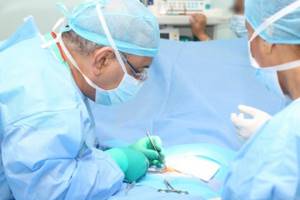
The tumor may not be palpable and may be painless. A characteristic symptom of the disease is clear or bloody discharge from the nipple. It is important to know that at first the disease may not manifest itself in any way! This is why regular preventive examinations are necessary.
The appearance of a “lemon peel” on the chest, identification of a lump, discharge from the nipples and inflammation of the lymph nodes in the armpits indicate the development of the disease. Such severe symptoms require immediate medical attention.
Diagnostics
In the diagnosis of mastopathy, the main role is played by methods that allow visualization of changes occurring in breast tissue. Laboratory, instrumental and other types of diagnostics are used. To diagnose mastopathy, the following studies are used:
- ultrasound examination of the breast;
- mammography;
- CT scan;
- blood test for hormones;
- breast biopsy (if malignancy is suspected).
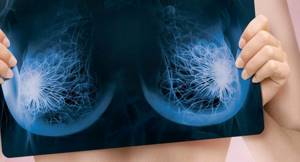
Additional research:
- ultrasound examination of the pelvic organs;
- Ultrasound of the thyroid gland;
- MRI.
Which doctor should I contact if I suspect mastopathy?
The first specialist who examines a woman if symptoms are present is a gynecologist or mammologist. He interviews the patient and examines the mammary gland.
At the first examination, a specialist can evaluate the following indicators:
- whether there is chest pain;
- presence of seals;
- is there any discharge from the nipples when pressed;
- Are the mammary glands symmetrical?
- change in skin color.
The mammologist examines and palpates the axillary lymph nodes, assessing their uniformity and size. The examination is recommended to be carried out on days 5-10 of the menstrual cycle.
Ultrasound of the breast
Ultrasound examination is the most effective way to diagnose pathological changes in the mammary glands. Due to its safety, it has no contraindications for use.
An ultrasound examination is carried out from the 5th to the 10th day of the menstrual cycle, because it is during this period that the concentration of hormones reaches its maximum, so during this period changes in the breast are best visualized.
What can be seen on an ultrasound:
- cysts or tumors;
- enlarged lymph nodes;
- proliferation of connective tissue.
Ultrasound diagnostics is carried out as a preventative measure in women over 25 years of age. The frequency is once a year or more often if there are complaints. Upon reaching the age of 40, radiography is most often prescribed, but if there are contraindications, it is replaced by ultrasound diagnostics. After 40-45 years, ultrasound should be performed at least 2 times a year.
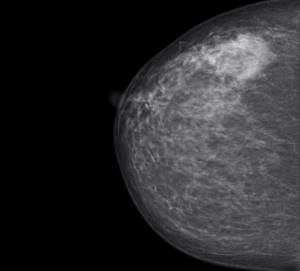
Mammography
Mammography is the most informative study of breast pathologies. But due to the radiation load, it is used strictly according to indications.
Indications for mammography are:
- chest pain;
- nipple discharge;
- presence of seals;
- sinking of parts of the chest;
- change in shape (asymmetry);
- increase in breast size;
- enlarged lymph nodes and their pain;
- age over 45 years;
- preventive examination of women with a family history (if there are relatives with cancer of the breast or reproductive organs).
What can be seen during radiography:
- cysts;
- tumors;
- proliferation of connective tissue;
- adhesions;
- fibrous connections.
Mammography is performed on days 5–10 of the menstrual cycle. In women with the onset of menopause, this study can be carried out at any time convenient for her.
Breast biopsy
It is performed if a malignant lump in the mammary gland is suspected. To do this, they take a piece of breast tissue and examine it using a microscope.
A biopsy allows timely diagnosis of a tumor in the breast tissue.
For the procedure, general or local anesthesia is used. The choice of pain relief depends on the degree of growth of the pathology.
Typically, no special preparation is needed to perform a biopsy.
In addition to malignant changes, biopsy can predict the degeneration of cells into cancer.
Blood test for hormones
Since changes in the breasts are closely related to a woman’s hormonal background, a blood test for hormones is used to diagnose mastopathy.
Blood sampling is carried out strictly on an empty stomach, during the menstrual cycle from 5 to 10 or from 20 to 25 days of the menstrual cycle.
The main hormones detected in the blood:
- prolactin (a hormone responsible for the regulation of lactation);
- thyroid hormones;
- estradiol (ovarian hormone);
- follicle-stimulating hormone;
- thyroid-stimulating hormone.
The specialist evaluates the results.
Blood test for tumor markers
In addition, if a malignant process in the breast is suspected, an analysis for tumor markers may be required. This test assesses whether a malignant tumor exists in the breast.
Breast tumor markers include CA 15-3. But it should be remembered that there are errors in assessing its concentration.
The tumor marker can increase not only when oncology occurs, but also during the development of autoimmune processes, inflammatory changes and during pregnancy.
Differential diagnosis
Symptoms of mastopathy are rather nonspecific in nature and therefore differential diagnosis is carried out with the following pathologies:
- mastitis (purulent inflammation of the mammary gland);
- breast cancer;
- tumor metastasis from other organs (usually from the reproductive system);
- breast tuberculosis;
- chest injuries;
- breast cyst;
- benign breast tumor (fibroadenoma).
Breast self-examination
Self-examination of the mammary glands allows you to suspect pathology in time and seek medical help.
Breast self-examination should be performed at least once a month starting at age 25.
Breast examination:
- careful palpation (pressing) with fingertips on the mammary gland to detect lumps;
- examination of the mammary glands (color, symmetry assessed);
- breast examination with arms raised;
- careful palpation of the subclavian and axillary lymph nodes (performed with a raised hand);
- inspection of the nipples and gentle pressure;
Disease prevention
With mastopathy, as with any other disease, prevention is very important. To do this, all women over 35 years of age should have a mammogram every two years, and after 50 years of age it must be done every year. You should also try to lead a healthy lifestyle, giving up bad habits. Limit the amount of coffee, chocolate, cola and salt in your diet, increasing the number of foods rich in fiber. In addition, it is important to conduct monthly breast self-examination. Women need to choose comfortable underwear and try to avoid any breast injuries.
Thus, it is clear that mastopathy itself does not pose a danger to the patient’s life, but can provoke the appearance of oncology. Today, mortality from breast cancer is at a very high level. Coping with this disease in the initial stages is quite simple, but in advanced stages it is sometimes impossible. However, knowing all this, many ladies prefer to ignore emerging problems with the mammary glands, which ultimately can lead to an extremely sad outcome. Every woman should remember that mastopathy needs adequate treatment, since without it it never disappears.
Treatment of mastopathy
Treatment of mastopathy is complex and includes the use of medications, surgery and diet. If desired, you can add traditional medicine.
Drug treatment
Treatment includes the use of dosage forms. Therapy can be hormonal and non-hormonal. Hormonal treatment is aimed at the cause that led to changes in the mammary gland, normalizes hormonal levels, reduces the effect of hormones, regulates the functioning of the thyroid gland and ovaries. Non-hormonal treatment is aimed at correcting symptoms, and in some cases affects the cause of the disease (for example, with a lack of iodine in the body).
Hormonal treatment of mastopathy:
| Hormonal treatment of mastopathy | Drugs for mastopathy, their action and method of application |
| Combined oral contraceptives | They are used to normalize the functioning of follicle-stimulating and luteinizing hormones. Take throughout the menstrual cycle, taking a break for 7 days before the expected day of menstruation. Examples: Regulon, Yarina, Ovidon. |
| Drugs that reduce prolactin concentrations | Suppresses the synthesis of prolactin produced in the pituitary gland. The most common prescription is Dostinex. Take 1-2 tablets 3 times a day. |
| Progesterone preparations | Normalize hormonal levels. Urozhestan is prescribed, which is a synthetic analogue of progesterone. Urozhestan is taken starting from the 14th day of the menstrual cycle for the next two weeks. The course of treatment is 2-6 months. |
| Drugs that reduce estrogen concentrations | Blocks excess estrogen production. Tamoxifen is prescribed, which is used in the form of tablets or injections. |
| Drugs for regulating the thyroid gland | Prescribed to regulate the functioning of the thyroid gland. Eutirox is prescribed. |
Non-hormonal treatment:
- non-steroidal anti-inflammatory drugs (Diclofenac, Nise);
- iodine-containing drugs (Iodomarin);
- diuretics (to reduce swelling);
- sedatives (tincture of motherwort, valerian);
- hepatoprotectors;
- vitamin complexes.

Surgical treatment of mastopathy
Surgical intervention in the treatment of mastopathy is rarely resorted to. But if conservative treatment does not give the desired results, and the patient’s condition worsens, then surgery is prescribed.
Surgical treatment is quite serious and has a number of specific indications and contraindications for its implementation.
Indications for surgical intervention:
- an increase in the size of cysts in a short period of time;
- suspected breast cancer;
- large size of formations.
Contraindications:
- pregnancy;
- lactation period;
- severe somatic pathologies.
The operation is performed under general or local anesthesia. The choice of anesthesia depends on the individual characteristics of the patient and the extent of the process.
If the operation is performed under general anesthesia, the patient is hospitalized in a surgical hospital. Before surgery, you need to undergo special training and undergo tests.
Preoperative preparation includes:
- performing ultrasound or radiography of the mammary glands;
- blood and urine tests;
- conducting an electrocardiogram;
- consultation with a therapist;
- consultation with an anesthesiologist.
The operation is carried out in several ways. These include puncture of cysts and complete removal of formations. Let's consider the surgical treatment of mastopathy:
| Type of surgery for mastopathy | The essence and features of surgical intervention |
| Cyst puncture | The idea is to puncture the cyst and extract excess fluid from it. The walls of the cyst become sclerotic and subsequently resolve. It is carried out only on small formations. |
| Removing nodes and other formations | This implies the removal of formations. It is carried out if the node has reached a fairly large size or if cancer is suspected. If there is extensive growth, partial or complete removal of the breast (mastectomy) may be required. |
After the operation, the patient is placed in intensive care, where medical staff monitor her condition for 24 hours, and then she is transferred to a department to await discharge.
Discharge from the hospital is carried out on the 7th day.
Traditional methods of treating mastopathy
Folk remedies are not the only way to treat mastopathy. They are taken as part of complex therapy with the use of drugs.
| Traditional treatment of mastopathy | Cooking method |
| Cabbage leaf compress | Boil the cabbage leaves and grind them to a paste. Next, wrap the resulting mass in a clean cloth, apply it to your chest and secure it. This compress can be done at night. |
| Burdock root decoction | Boil the burdock roots, strain and let it brew. Take ½ cup 14 days after meals. |
| Herbal mixture of yarrow, string and motherwort | You need to take 2 tablespoons of each of these dried herbs and pour boiling water. Take 1 glass before meals 2 times a day for 14 days. |
| Alcohol tincture of walnuts | To prepare, you need to take a handful of peeled walnuts and pour 0.5 liters of alcohol or vodka into them. Then let it brew for 10-14 days. Take 1 tablespoon of tincture once a day for 2-3 months. |
| Decoction of boron uterus | Boil the herb for 10 minutes, then cool and let it brew. Take ¼ cup before the onset of menstruation. |
| Cabbage juice | To prepare it you need cabbage leaves, beets or celery. |
| Beetroot compress | To prepare, you will need 2 fresh raw beets and 2 tablespoons of 9% vinegar. Grate the beets and heat in a water bath, and then add vinegar. Apply to the chest for 10 days. |
| Ointments for the treatment of mastopathy symptoms | Flaxseed ointment, thuja ointment. |
| Hirudotherapy (treatment with leeches) | Use only under the supervision of a qualified specialist. Leeches have the ability to thin the blood and produce special biological substances to normalize metabolic processes in the chest. |
| Cabbage leaf and honey compress | Heat the cabbage leaves to a comfortable temperature, spread 2 tablespoons of honey on top. Apply and secure the resulting compress to the mammary glands. Use at night for 1-2 weeks. |
| Treatment with essential oils | For preparation you will need camphor and medical alcohol. Mix everything in equal proportions and prepare a compress. Apply to the chest area in the evening for 10 days. |
| Propolis-based ointment | To prepare, you need to take a fatty base (vaseline, cream), add propolis. Mix everything thoroughly. Apply the ointment to the affected mammary gland once a day for 14 days. |
Alternative treatment cannot be a complete replacement for conservative therapy! Therefore, these drugs are used only as part of complex treatment. Treatment of mastopathy with folk remedies should begin after consultation with your doctor!
The effect of mastopathy on the female body
Mastopathy is a benign formation in the breast, one of the reasons for which may be hormonal imbalance.
With increased levels of the hormone estrogen, processes occur in the breast tissue that lead to cell growth and division.
Mastopathy is a benign formation, but there is a risk of degenerating into a malignant tumor. For the treatment of benign tumors, two types of therapy are used: Non-hormonal and anti-hormonal.
Mastopathy is a benign neoplasm in the mammary gland
If for some reason treatment cannot be carried out, then they resort to the use of herbal medicines. The disease does not go away on its own, and after a certain time, cell division occurs. Then breast cancer forms. What can cause this unpleasant disease, its consequences, and what effect it has on the female body, now we will try to figure it out.
Danger of disease
Why is mastopathy developing in women dangerous?
Breast disease can be found in every third woman. Many people postpone treatment of mastopathy without thinking that it can develop into an advanced disease - oncology, which can cause irreversible harm to their body.
Most often, the nodular form of mastopathy acquires a malignant nature. But this does not mean that other diffuse types of the disease can not be treated. Regular examination of the mammary glands is a woman’s health.
If it so happens that during the examination the doctor feels a suspicious tumor, the woman is sent for additional examinations.
At an early stage of the disease, it is recommended to undergo surgery, which will cause minimal harm to the health and appearance of the breast.
If a woman seeks help from a medical center in the late stages of cancer, the breast is completely removed. But this does not always save her life. The danger is that even after removal of the mammary gland, there is a high probability of cancer cells spreading to nearby organs.
Nodular mastopathy on mammogram
Factors influencing mastopathy
The appearance of mastopathy is associated not only with genetic predisposition, lifestyle, but also with environmental influences. The main causes of the disease are considered:
- diseases of the liver, gall bladder and thyroid gland;
- inflammatory process of the uterine appendages;
- bad habits (alcohol and tobacco);
- insufficient amount of iodine in the body;
- stressful situations, depression;
- absence or inconsistent sex life;
- late first pregnancy or its absence.
One of the known factors is irregular sex life, which leads to hormonal imbalance and entails problems with the appendages (ovaries) affecting the production of two main sex hormones - estrogen and progesterone. In turn, they directly affect the mammary gland. Therefore, the slightest problems with the ovaries negatively affect her condition and health.
A woman’s nutrition is one of the physiological factors that is very important and affects the risk of morbidity.
First of all, you need to be careful with caffeine-containing drinks, as they increase the level of prolactin in the blood, which negatively affects the mammary gland.
Modern women eat not only poorly, but also incorrectly. All kinds of semi-finished products significantly increase the risk of its occurrence.
To prevent a woman from experiencing such an unpleasant problem, she should include in her diet as many fruits, vegetables, and herbs as possible, which are not only rich in vitamins, but also contain fiber.
Good foods for the mammary gland include carrots, sweet peppers, apples, and peaches. All of them contain vitamins and microelements that do not allow the development of breast cancer and mastopathy.
The lack of macro and microelements can be easily compensated with the help of tableted vitamin complexes.
Diseases of the gallbladder and liver can provoke mastopathy
The influence of sport on the development of mastopathy
Low physical fitness of women leads to obesity, which negatively affects the entire body as a whole. This is why physical education is needed, but moderate, that is, half an hour a day. This could be running, swimming, walking in the fresh air.
Tobacco smoking is one of the factors that significantly affects women’s health and their mammary glands. This bad habit can provoke such a consequence as the development of cysts in them. Therefore, women who do not smoke, or have quit smoking, have every chance of not getting mastopathy.
How to identify mastopathy. Its danger for a woman
A woman, knowing how to recognize mastopathy, can conduct an independent examination. An important sign of the presence of mastopathy is compactions that can be felt, nodules of different sizes and shapes in the mammary glands. The appearance of nodes and compactions does not cause concern to the woman. Pain may appear several days before the start of the menstrual cycle.
As soon as the menstrual cycle begins, the pain disappears. At the first signs of the disease, you should contact a mammologist.
Mastopathy is a disease that must be treated in order to avoid consequences. If left untreated, it progresses and over time can lead to the formation of a malignant tumor. If the disease is advanced, pain may appear in the armpit and shoulder area. The slightest touch to the chest causes terrible pain.
Breast examination in front of a mirror is carried out 12 days before the start of the cycle
You should independently examine the mammary glands once a month, 12 days before the start of the menstrual cycle.
1. It is necessary to examine the nipples. They must be symmetrical with each other.
2. There should be no ulcers or tightness on the nipples.
- Feel the glands and make sure there is no compaction on them. This must be done in a lying or standing position.
- Examine the skin of the mammary glands. Has its color changed, and is there any swelling?
- In front of the mirror, with your hands raised up, you should inspect the glands from all sides.
- Check the underwear for stains and make sure there is no discharge from the nipples. If discharge appears, you should consult a doctor.
The self-examination is not enough to establish a complete clinical picture. If any signs of the disease are present, then it is also necessary to undergo an ultrasound examination and mammography. The results will be more accurate than self-examination.
Women should have a mammogram or ultrasound once a year. These examination methods will allow timely detection of the disease. Mammography is done for women over 35 years of age.
The mammologist strictly follows the sequence of examinations, based on the patient’s age group. If there is chest pain, lumpiness or discharge from the nipples, then mammography is performed regardless of age category. Ultrasound examination has no contraindications, so it is done at any age, and pregnant women are no exception.
Treatment of mastopathy, if it already exists, can be supplemented using traditional methods. Healing decoctions of chamomile, linden and honey will help relieve pain and relieve inflammation. Lotions with cabbage leaves, camphor oil and kefir have an amazing effect. Treatment with traditional medicine should be strictly under the supervision of a medical specialist.
Source: https://vrachlady.ru/mastopatiya/chem-opasna-mastopatiya.html
Diet for mastopathy
Adequate nutrition for women with mastopathy is one of the important links in treatment. The main role should be given to balanced consumption of products.
The following products can be consumed:
- lean meats and fish;
- seafood;
- seaweed;
- fresh vegetables and fruits;
- seeds;
- dairy products (milk, cottage cheese, kefir);
- vegetable oils;
- liver;
- eggs.
It is necessary to maintain body weight at a level that is comfortable for the woman. Avoid overeating and sudden weight gain.
What should be excluded from the diet for mastopathy:
- chocolate;
- flour products;
- coffee;
- strong tea.
These products contain substances that stimulate the progression of mastopathy and cause increased pain.
Mastopathy during pregnancy
Mastopathy during pregnancy can occur due to sudden fluctuations in hormonal levels. During pregnancy, treatment with hormonal drugs is not permitted; only general recommendations are given to improve the well-being of the pregnant woman.
These include:
- wearing comfortable underwear;
- “air” baths for the mammary glands;
- balanced diet;
- proper rest and sleep.
After childbirth, mastopathy often goes away with the onset of lactation.
Main hazards and consequences
The main danger of mastopathy is the risk of progression to cancer. But it should be noted that breast cancer against the background of mastopathy occurs only in 10% of cases of the total number of patients.
The cystic nodular form of the disease can develop into cancer. But thanks to modern diagnostics and treatment, this complication practically never occurs.
But despite this, every patient should know the main symptoms of breast cancer. Knowledge of this aspect will help reduce the risk of developing dangerous complications and will help prescribe the correct treatment in a timely manner.
The main symptoms of the transition of mastopathy to breast cancer:
- large seal;
- severe pain in the mammary gland;
- bloody issues;
- change in breast skin color;
- enlargement of regional lymph nodes;
- swelling of the mammary gland;
- increased body temperature (especially in the evening);
- rapid weight loss;
- weakness, fatigue.
If you notice these symptoms, you should seek medical help as soon as possible.
Forecast
Mastopathy in most cases is an absolutely benign disease that is not likely to pose a threat to the patient’s life. With unadvanced mastopathy, the prognosis is favorable.
Prognostically unfavorable is the risk or transition of mastopathy to cancer. In this case, the success of treatment will depend on how early the patient sought medical help.
An important role in assessing the prognosis of the disease is played by the patient’s condition, her age, the extent of the process and concomitant diseases.
Prevention of mastopathy
Prevention of mastopathy should be done starting from the age of 25. It is from this age that changes occur in the body, which can subsequently become a trigger for the formation of mastopathy or other pathological changes in the mammary glands.
The main preventive measures are:
- undergoing an annual medical examination by a gynecologist or mammologist;
- Ultrasound of the mammary glands;
- mammography of the mammary glands;
- breast examination itself (at least once a month);
- maintaining breastfeeding if possible;
- wearing the right underwear (the bra should not put pressure on the mammary glands);
- avoiding stress;
- balanced diet with sufficient vitamins and minerals;
- regular sex life;
- quitting smoking and alcohol;
- avoiding injury to the mammary glands;
- good sleep;
- avoiding contact with harmful chemicals;
- decreased exposure to open sun;
- control over the intake of hormonal drugs.
How to treat mastopathy?
Treatment of mastopathy is a very individual process, depending on the form of mastopathy, the woman’s age, how developed the process is and whether there are concomitant diseases (for example, gynecological) and other factors. Most often, treatment is carried out in the following areas:
- normalization of hormonal levels (prolactin, estrogens, progesterone);
- compensation for endocrine pathologies (diabetes, obesity, thyroid diseases);
- elimination of pain (if necessary, in the case of nodular mastopathy, surgery can be performed).
In the treatment of mastopathy, oral contraceptives, analogues of sex hormones, are often used. Such treatment should only be carried out by a doctor.
In case of mastopathy (as in other cases), tanning, including artificial tanning, is not useful. And, of course, a healthy lifestyle helps slow down the development of the disease, first of all, quitting smoking, as well as healthy eating, exercise and quality sleep (circadian cycles significantly affect the regulation of sex hormones).
Outpatient observation
After completing the main treatment of mastopathy, it is necessary to be constantly monitored by a mammologist. And this applies not only to women with mastopathy. In addition to them, women with a hereditary predisposition to the development of pathologies of the mammary gland or reproductive system are subject to constant medical supervision.
Dispensary observation plan:
- conducting ultrasound diagnostics in women;
- performing mammography;
- examination by a mammologist;
- visiting a gynecologist;
- performing ultrasound of the pelvic organs;
- testing for sexually transmitted infections;
- colposcopy.
Reviews
Anna, 32 years old “Mastopathy after childbirth”
With the onset of lactation, my breasts began to hurt and my ducts became inflamed. When visiting a doctor, he was diagnosed with mastitis. After a detailed examination, I found out that I have mastopathy and the cyst blocked the duct. Breastfeeding had to be stopped due to treatment. Now I’m expecting my second baby, there are no signs of mastopathy. I hope breastfeeding will not be interrupted this time. After all, as the doctor explained to me: “Breastfeeding is the best protection against mastopathy.”
Maria, 29 years old “My breasts hurt, I went to the doctor, it turned out to be mastopathy”
At one point, severe chest pain appeared. After the examination, we were sent for an ultrasound, where the diagnosis of mastopathy was confirmed. There were a lot of doubts and fears, but when I completed the course of treatment, I forever forgot what mastopathy was. Now I undergo regular examinations to prevent relapse.
Evgenia, 33 years old, “I discovered a lump in my breast. They said: "Cut"
I discovered a lump in my chest, after an examination the doctor suggested cutting it out. After the operation, she underwent a course of treatment. It was a long time ago, but now I found out that mastopathy can be treated with medications. She was treated 6 years ago, after which she became pregnant and breastfed the child. No more mastopathy.




